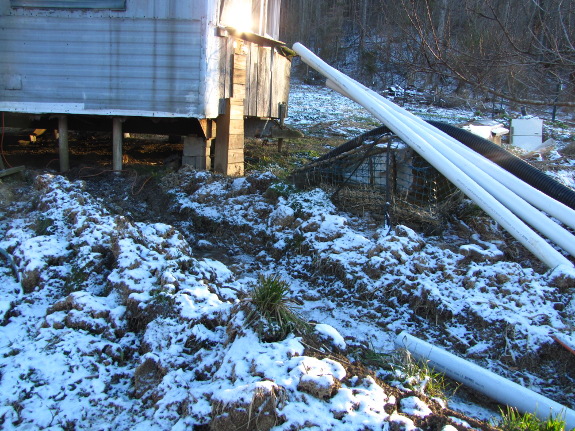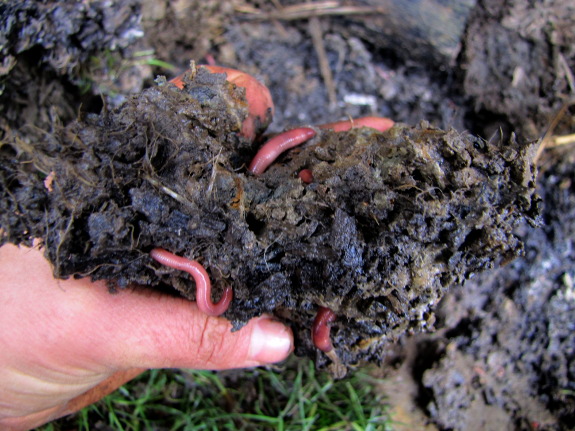
Under the drain out back

It's been nearly a month
since I last posted about our partially-completed
greywater wetland,
but I haven't been entirely idle. Whenever the water's low enough
to cross the creek without hip waders and I don't have anything more
pressing to carry in from the parking area, I've tossed a ten-foot
section of pipe over my shoulder during my morning walk. I guess
that means the floodplain has been easily passable 6 days out of the
last 28.
With all the pipe nearby
for channeling water from the trailer to the
wetland, I finally dug the last part of the trench. I'd left two
feet
of buffer area right where the current pipes discharge so that the
soggy mess didn't end up in the trench until I was ready for it, but
now I dug on through.

What I discovered
underneath our current drain
out back was a
fascinating system I didn't know existed. Two feet out from the
discharge spot, the clay turned grey --- clearly it had gleyed itself. Closer in, a
band of white...something...had built up right around the base of the
pipes but a few inches under the soil. And atop that white band
was an astonishing number of earthworms.
True, the drain out back
created a soggy mess in front of our back door, and a mild swampy smell
in certain seasons. But I'm impressed by the earth's ability to
take lemons and make lemonaide. Given how well my non-system
works, I have high hopes an actual greywater wetland will work even
better.
Want more in-depth information? Browse through our books.
Or explore more posts by date or by subject.
About us: Anna Hess and Mark Hamilton spent over a decade living self-sufficiently in the mountains of Virginia before moving north to start over from scratch in the foothills of Ohio. They've experimented with permaculture, no-till gardening, trailersteading, home-based microbusinesses and much more, writing about their adventures in both blogs and books.
Want to be notified when new comments are posted on this page? Click on the RSS button after you add a comment to subscribe to the comment feed, or simply check the box beside "email replies to me" while writing your comment.
- Remove comment
- Remove comment
